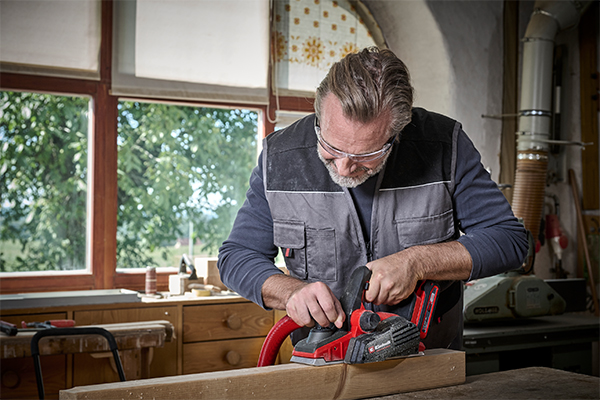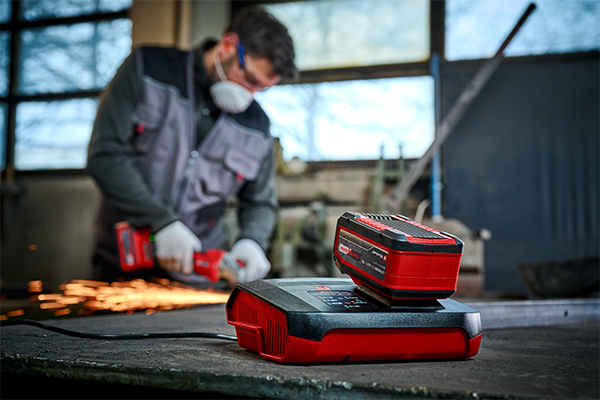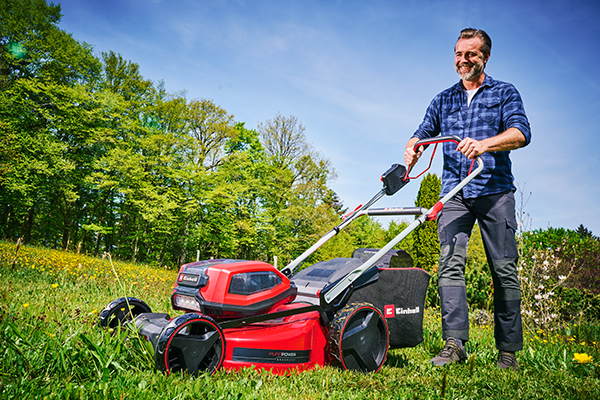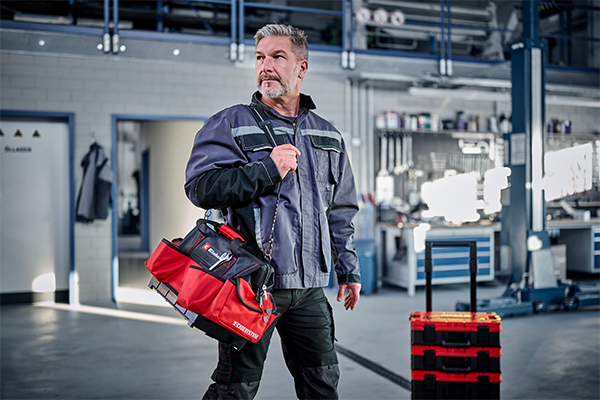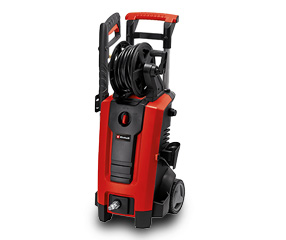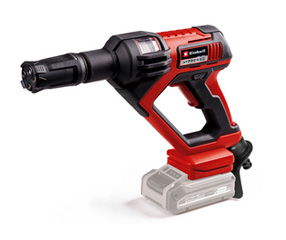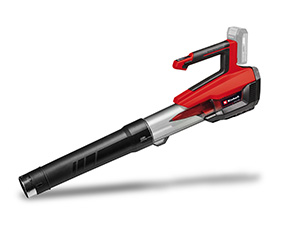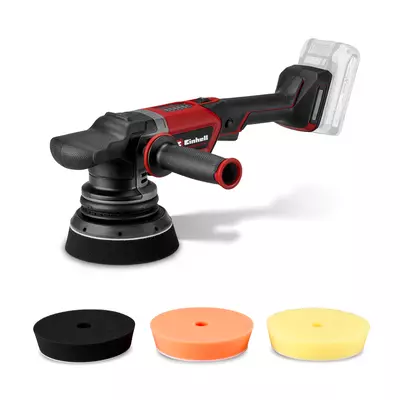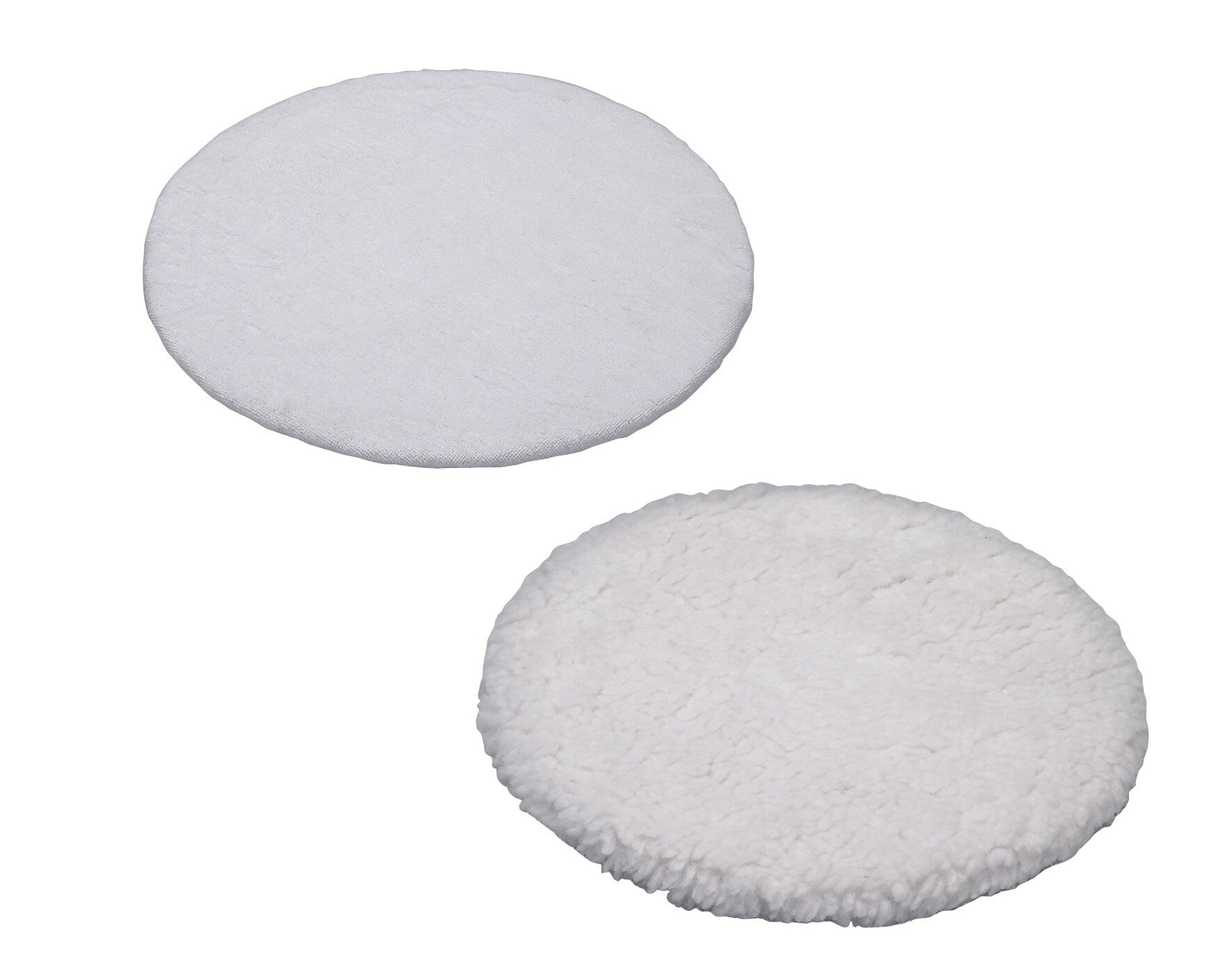Polishing your car made easy: Achieve a flawless finish with Einhell polishers
A gleaming coat of paint doesn’t just look impressive – with the right sealant, it also protects your car from wear and tear, ensuring a well-maintained appearance. With Einhell polishers and the right accessories, you can restore your vehicle’s shine effortlessly. Whether you want to remove light scratches, refresh dull patches or bring the entire paintwork to a high gloss, the right technique will help you achieve professional results in no time.
❱❱ In our blog post, we show you the ideal time to polish, how to prepare properly, and the best way to apply car polish.
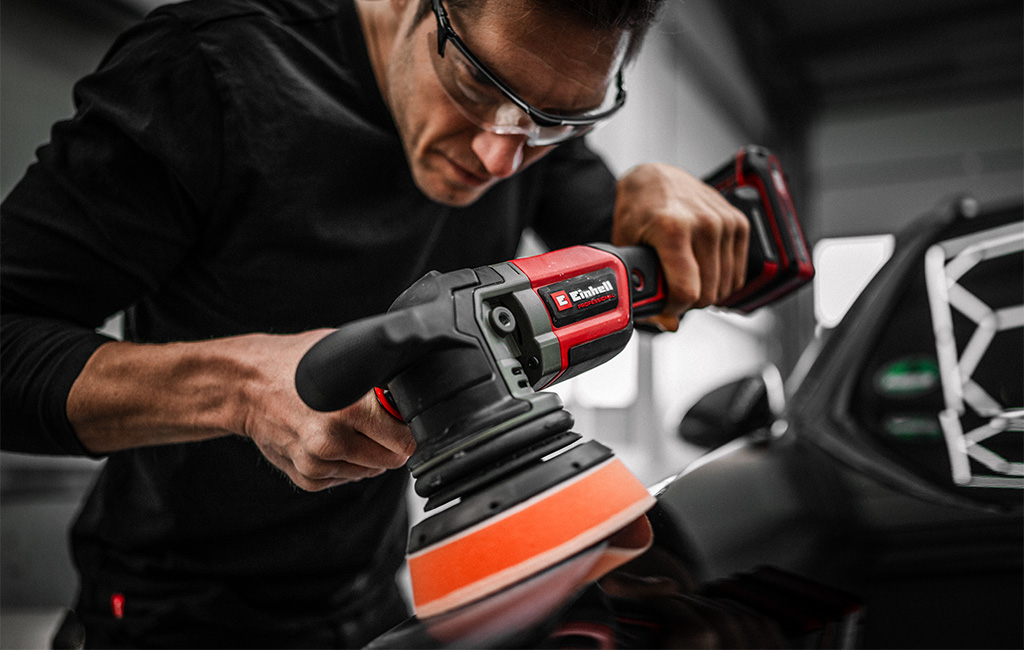
Preparation
Before you start using the polishing machine, there are a few basic steps to take. This ensures your car’s paintwork is perfectly prepared for polishing.
- Choosing your workspace: Ideally, apply polish in a shaded area, preferably in dry weather and at cool temperatures. If you have enough space, your garage is the perfect spot. Avoid polishing in direct sunlight or when it’s too cold. Heat causes the polish to dry too quickly, making it difficult to work with. In colder conditions, the polish may not dry properly, which can lead to streaks.
- Cleaning the car paintwork: Before you begin, the vehicle should be thoroughly washed and dried. Carefully remove dirt, dust, and insect residues, and then dry the car completely. No water spots or other residues should remain.
❱❱ TIP: For cleaning your car, you can use an Einhell pressure washer or the Einhell cordless pressure cleaner gun HYPRESSO. To dry the vehicle, a cordless blower, chamois leather, or a specialist car drying towel is ideal.
- Divide into sections: Working on small areas makes it easier to apply the polish. Divide your vehicle into manageable sections – for example, the bonnet, roof, doors or wings. This helps you stay focused and prevents polish residue from drying before you can buff it out.
The right polishing machine
There are generally two types of polishers: rotary polishers and dual-action (orbital) polishers. Each has its own strengths. The best choice for you depends on your level of experience and the result you want to achieve.
Rotary polishers
A rotary polisher works with a pure circular motion – the backing pad rotates continuously in one direction. This moves the abrasive particles across the paint surface at very high speed, resulting in a particularly strong cutting action. It’s ideal for removing deeper scratches or heavily weathered paintwork quickly and effectively. One major advantage of rotary polishers is their predictable movement – you can apply targeted pressure and work with high precision. Many models come with an M14 spindle, allowing you to attach backing pads in different sizes to suit various vehicle parts. However, rotary polishers also have their challenges. The high friction can generate heat quickly, which may be risky on sensitive surfaces such as plastics or edges. In addition, the machine is slightly more difficult to handle, so controlled hand movement is essential. Beginners or those lacking focus risk creating so-called holograms – visible swirl marks in the paint.
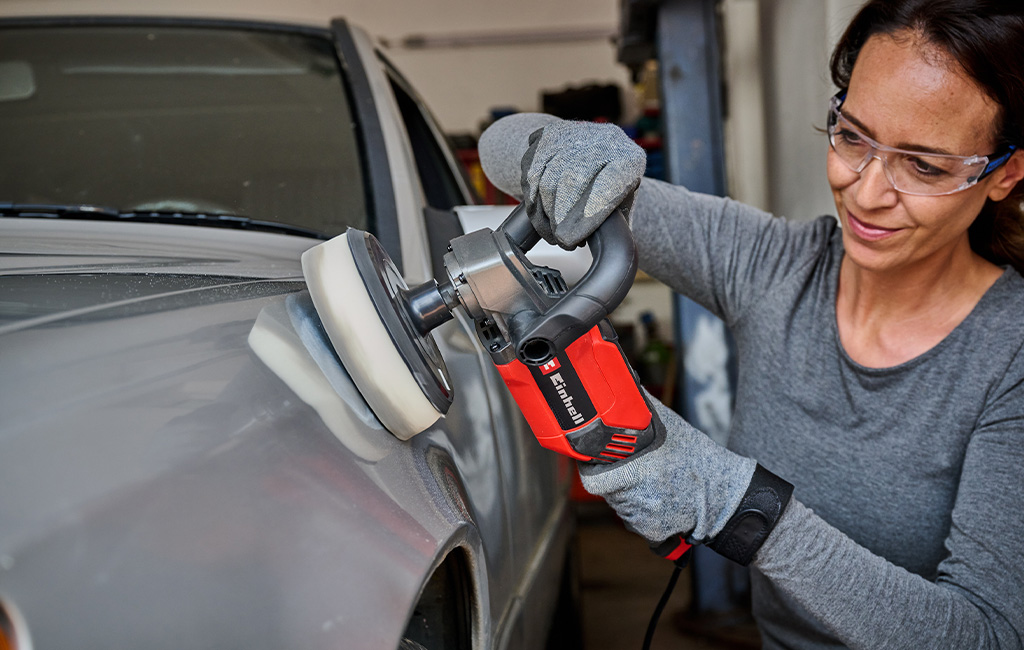
Dual-action (orbital) polishers
In contrast, a dual-action polisher uses an elliptical motion that mimics natural hand movements. The backing pad doesn’t just rotate; it also moves in small circular orbits – known as the orbital throw. This design creates a combined orbital and rotational movement that is much gentler than pure rotation. The result: less heat build-up, less material removal – allowing for especially careful treatment of the paintwork. Dual-action polishers are therefore the first choice when applying fine polishes or achieving a high-gloss finish. Another key benefit is how easy they are to handle. The machine doesn’t pull in any direction and can be guided smoothly and evenly across the surface, making it ideal for beginners. The risk of causing holograms is very low – perfect for finishing after a thorough paint correction. A great example is the Einhell Professional cordless dual-action polisher CP-EP 18/125 Li BL. It combines a powerful brushless motor with an 8 mm orbital stroke and precise speed control. This gives you full control and enables a consistent, streak-free finish.
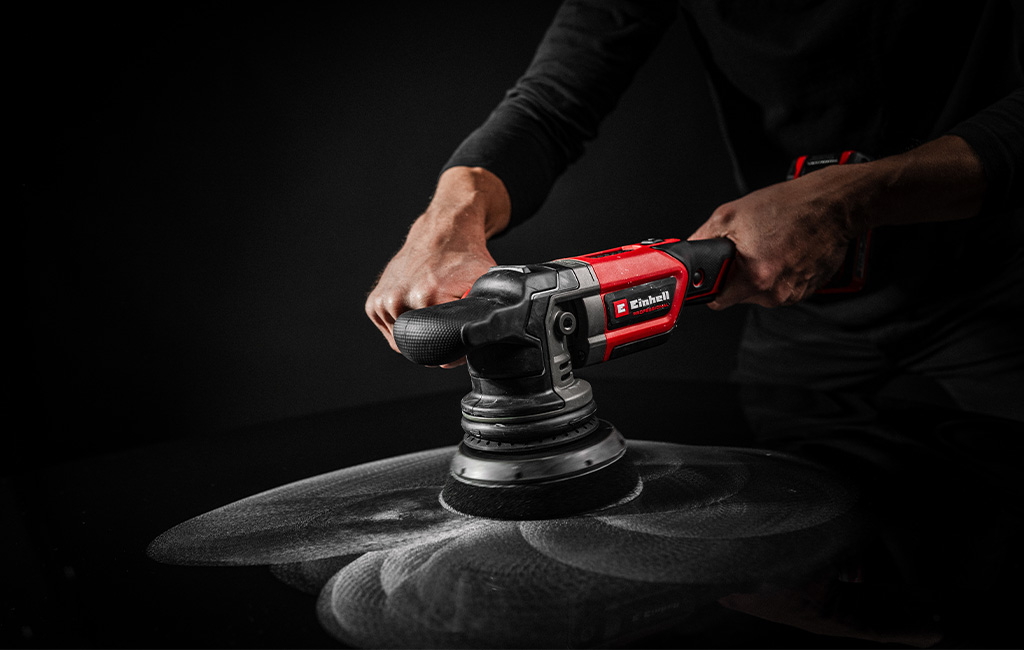
Direct comparison:
| Rotary Polisher | Dual-Action (Orbital) Polisher | |
|---|---|---|
| Polishing performance | High, fast removal | Lower, but more controlled |
| Heat generation | High heat possible | Low, gentle on paintwork |
| Handling | Challenging, pulls in direction of rotation | Beginner-friendly, easy to guide |
| Holograms | Risk present | Minimal risk, ideal for finishing |
Accessories & application
To get the best out of your polishing machine, it’s not just about the tool itself – using the right accessories is just as important. For best results, use Einhell polishing pads or bonnets that are specifically designed for your machine. This ensures everything works in perfect harmony and delivers a smooth, consistent finish.
Apply the polish sparingly and evenly directly onto the slightly dampened pad – a few small dabs are more than enough. Then gently place the machine on the paint surface and start at a low speed. Work in a crosshatch pattern: first in horizontal passes, then again vertically. This ensures the polish is distributed evenly across every part of the surface. Avoid applying too much pressure while polishing to prevent the area from overheating too quickly. The polisher should always stay in motion.
Be especially careful around edges or hard-to-reach areas. It’s best to work by hand here using a polishing sponge or polishing wool. Before the excess polish dries, remove the residue with a soft microfibre cloth.
💡INFO: Polishing compounds
Polishing compounds differ in the size of their abrasive particles. Coarse polishes remove more material and are suitable for visible scratches, but they can be harder to work with. Fine polishes are gentler, easier to apply, and ideal for light signs of wear. For the final mirror-like shine, a finishing polish is used – it removes the last streaks and gives the paint a perfect gloss. It's best to start with a finer polish and only move to a coarser one if needed – this way, you stay on the safe side.
Step-by-step with Einhell tools
Once your car is prepared and clean, you’re ready to get started. Here’s the best way to use your Einhell polishing machine:
- Apply the polish: Place two to three small dabs of polish directly onto the pad. You don’t need more – using too much will only make application harder.
- Start gently: Carefully place the machine onto the surface and begin at a low speed. Move it evenly across the area without applying pressure.
- Increase the power: Gradually raise the speed and work in a crosshatch pattern – first horizontally, then vertically. Important: Always keep the machine moving to prevent heat build-up.
- Buff off: Once a section is done, wipe away the polish residue with a soft microfibre cloth. This lets you immediately check how smooth and even the finish is.
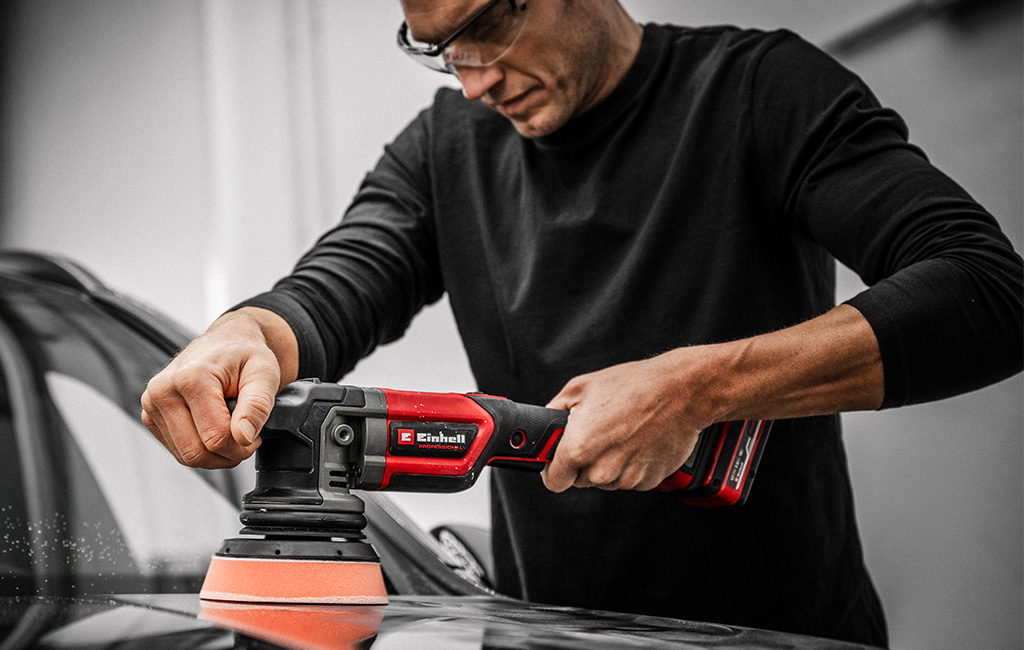

Seal & finish
To ensure your freshly polished paintwork not only shines but also stays protected for longer, the final step is to apply a protective layer. Suitable options include wax or specialised paint sealants. You can easily apply the sealant evenly using your Einhell polishing machine. Afterwards, buff it thoroughly with a microfibre cloth until the surface gleams with a deep gloss. The result: a brilliant mirror-like shine combined with long-lasting protection that shields your car from environmental effects and helps maintain the finish for much longer.
Tips for best results
- Keep pads clean: Clean or replace polishing pads regularly to prevent dirt particles from causing scratches.
- Work gently: Don’t press too hard – let the machine do the work, not your muscle power.
- Less is more: Use polish sparingly. Even small amounts are enough to achieve an even finish.
Conclusion
With the right preparation, suitable accessories, and a polishing machine from Einhell, it’s easy to restore your car’s shine. Whether you’re correcting small scratches or bringing the entire paintwork to a high-gloss finish – with a bit of patience and the right technique, you can achieve professional results. Be sure to use polish sparingly and apply it evenly, keep your pads clean, and finish with a protective sealant. That way, you’ll enjoy not only a deep, brilliant shine but also long-lasting protection for your vehicle.

